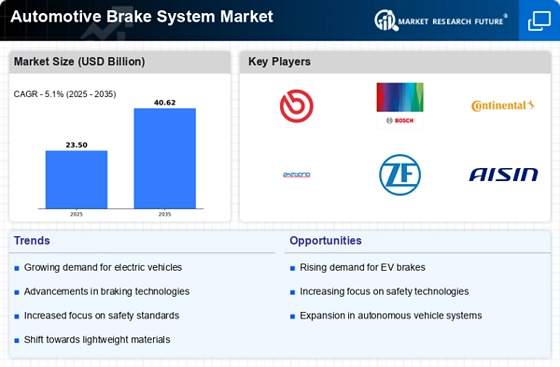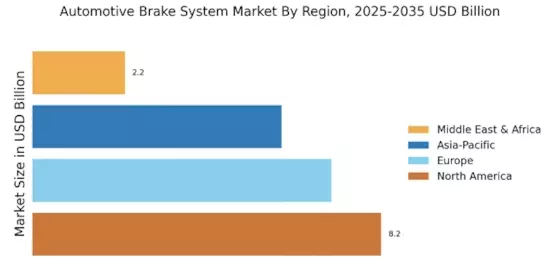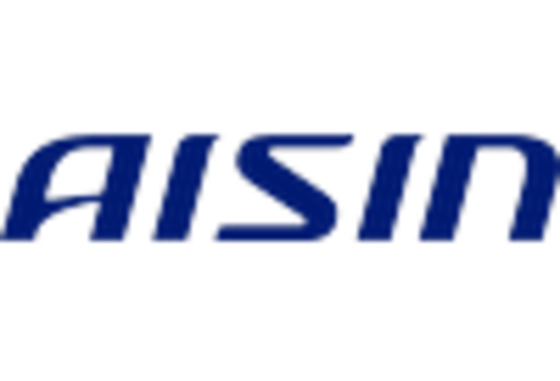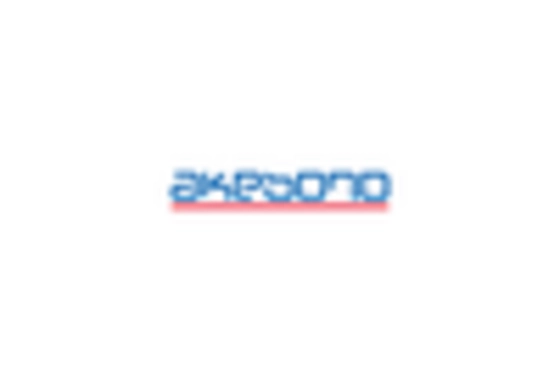Increasing Vehicle Production
The automotive brake system market is experiencing a surge in demand due to the increasing production of vehicles worldwide. As manufacturers ramp up their output to meet consumer demand, the need for reliable and efficient brake systems becomes paramount. In 2025, the production of passenger cars is projected to reach approximately 80 million units, which directly correlates with the demand for advanced braking solutions. This trend is further fueled by the rising popularity of SUVs and electric vehicles, which often require specialized braking systems. Consequently, the automotive brake system market is poised for growth as manufacturers seek to enhance safety and performance in their vehicles.
Growth of Electric and Hybrid Vehicles
The automotive brake system market is experiencing a transformation due to the growth of electric and hybrid vehicles. As these vehicles become more prevalent, there is a corresponding need for specialized braking systems that cater to their unique requirements. Electric vehicles often utilize regenerative braking, which necessitates the development of advanced brake systems that can efficiently handle the energy recovery process. In 2025, it is projected that electric and hybrid vehicles will account for over 25% of total vehicle sales, creating a substantial opportunity for the automotive brake system market. This shift not only enhances the demand for innovative braking solutions but also encourages manufacturers to adapt their offerings to meet the evolving needs of the market.
Regulatory Compliance and Safety Standards
The automotive brake system market is significantly influenced by stringent regulatory compliance and safety standards imposed by governments. These regulations mandate the incorporation of advanced braking technologies to enhance vehicle safety. For instance, the implementation of anti-lock braking systems (ABS) and electronic stability control (ESC) has become a requirement in many regions. As a result, manufacturers are compelled to invest in innovative braking solutions to meet these standards. The market is projected to grow as companies strive to comply with evolving regulations, ensuring that their products not only meet safety requirements but also enhance overall vehicle performance.
Technological Innovations in Brake Systems
Technological innovations are reshaping the automotive brake system market, leading to the development of more efficient and effective braking solutions. Advancements such as regenerative braking systems, which are commonly used in electric vehicles, are gaining traction. These systems not only enhance braking performance but also contribute to energy efficiency by converting kinetic energy back into usable power. The market is expected to witness a compound annual growth rate (CAGR) of approximately 5% over the next few years, driven by these innovations. As manufacturers continue to invest in research and development, the automotive brake system market is likely to see the introduction of cutting-edge technologies that improve safety and performance.
Rising Consumer Awareness of Safety Features
Consumer awareness regarding vehicle safety features is on the rise, which is positively impacting the automotive brake system market. As individuals become more informed about the importance of advanced braking technologies, they are increasingly demanding vehicles equipped with superior braking systems. This trend is evident in the growing preference for vehicles that offer features such as automatic emergency braking and adaptive cruise control. In 2025, it is estimated that nearly 60% of new vehicles will be equipped with advanced driver-assistance systems (ADAS), which rely heavily on sophisticated brake systems. This shift in consumer preferences is likely to drive growth in the automotive brake system market.


















Leave a Comment